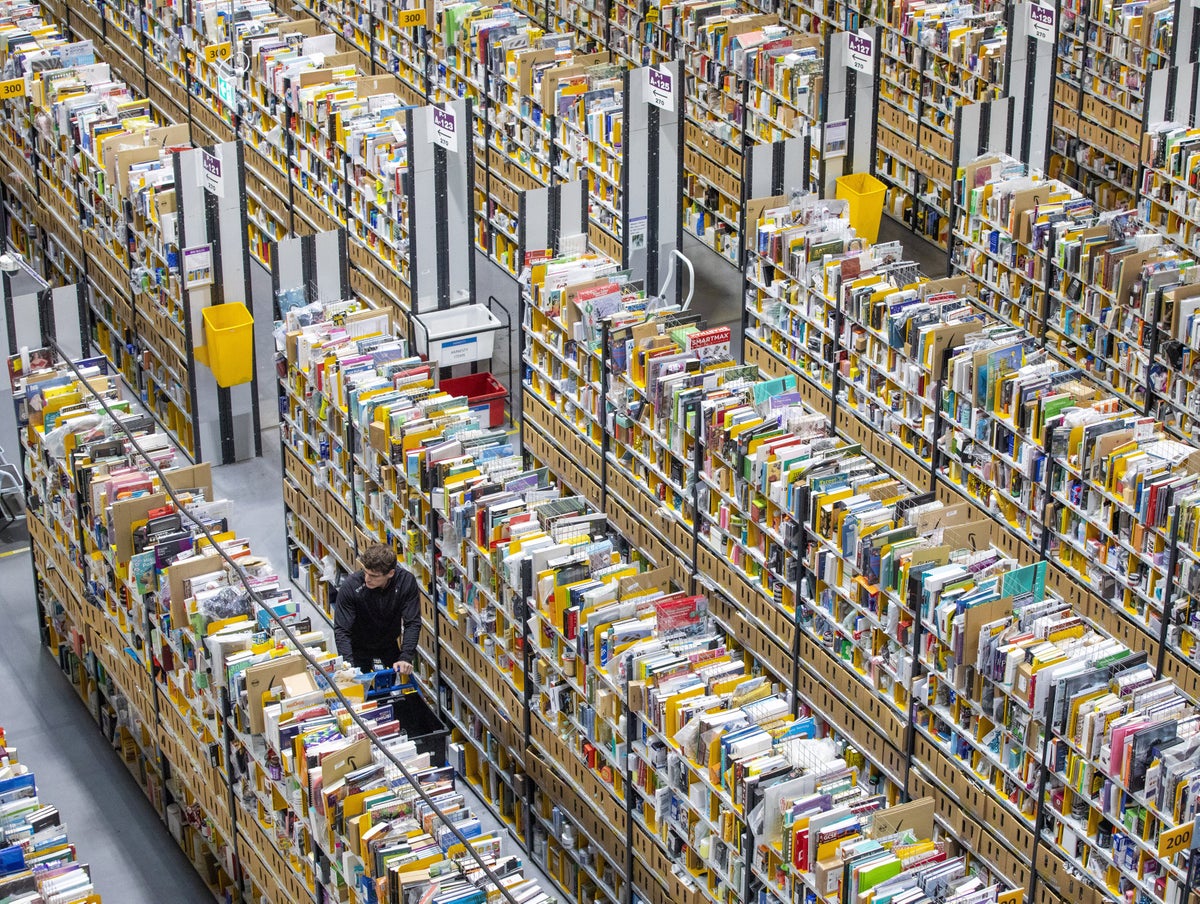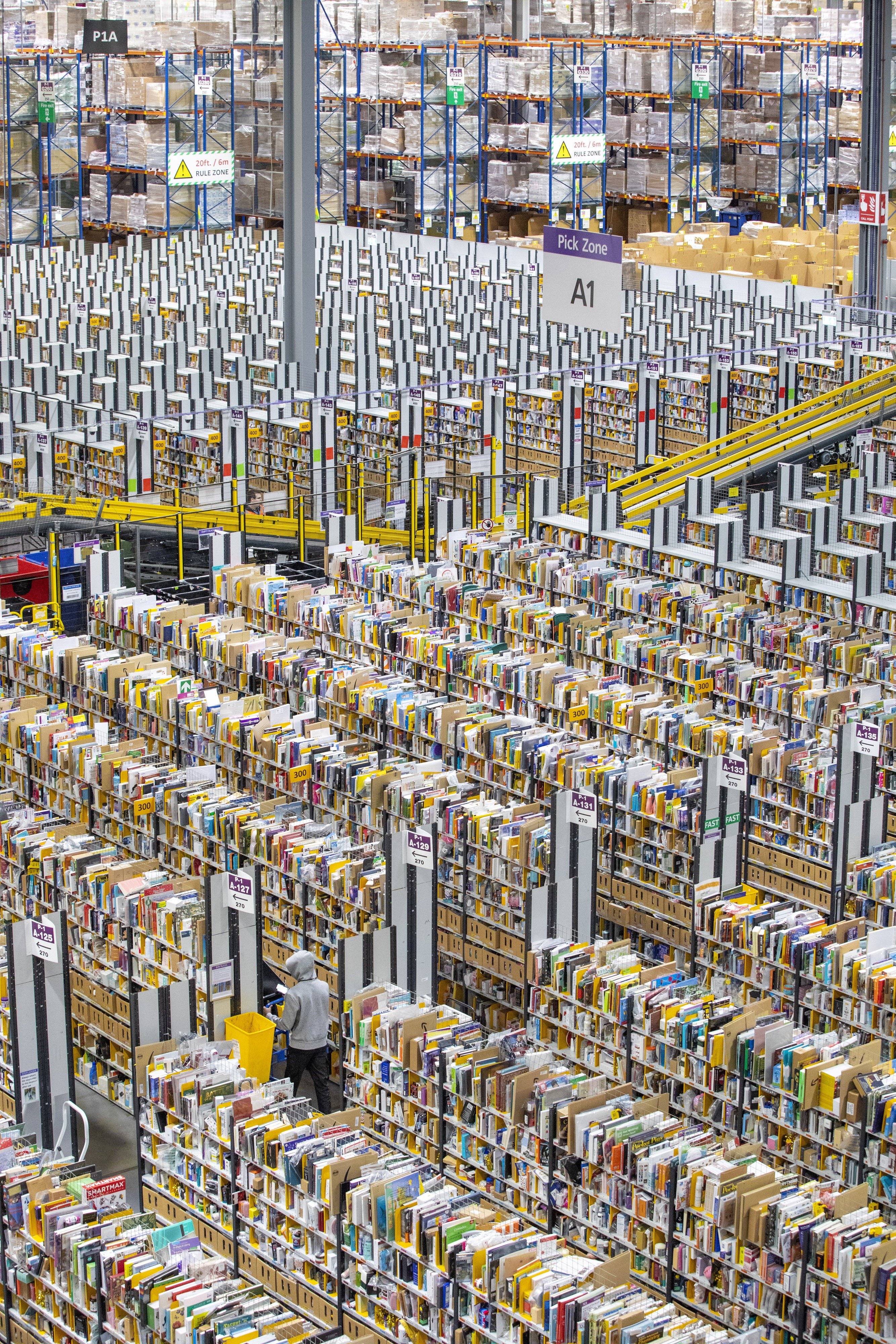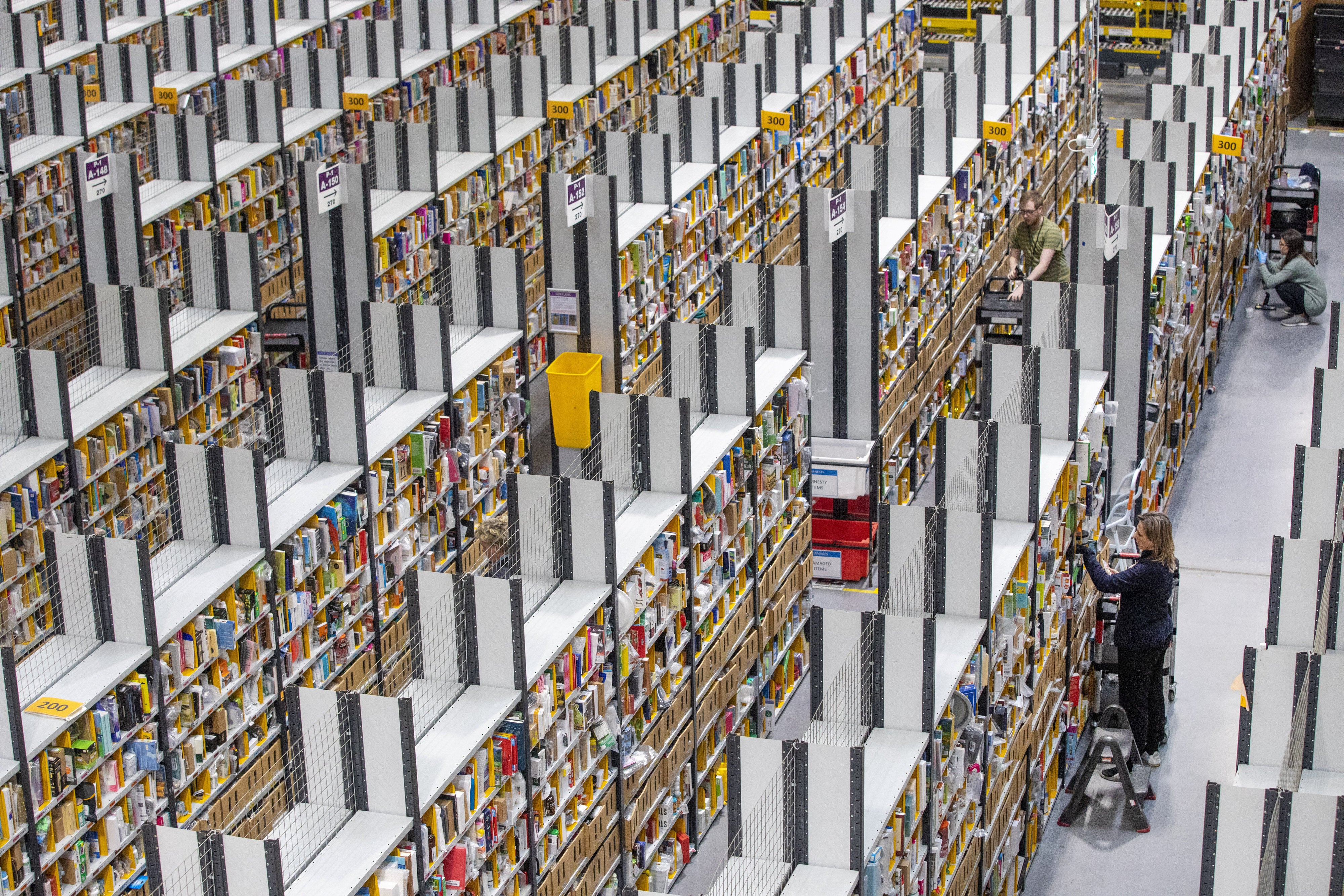
Black Friday is (nearly) here and keen buyers are gearing up for one of the biggest shopping sales of the year.
This year, the much-anticipated day falls on Friday (25 November), the day after Thanksgiving in the US.
Black Friday originated in the US after brands started to put on big sales on the day following Thanksgiving to mark the beginning of the Christmas shopping period.
It has since become a worldwide event, with research from PwC estimating that the average spend per person in the UK will be £238, with sales estimated to be £500m higher than in 2021.
One of the biggest digital retailers, Amazon, is readying its warehouses in preparation for the sale.
One of Amazon’s largest UK depots, located in Fife, stretches more than 1.5million square feet and features three miles of conveyors.
It is the size of 17 football pitches, and items waiting to be packaged by workers could be seen stacked floor to ceiling.

Hundreds of seasonal staff will join the factory’s permanent workforce, which is around 1,200 people strong.
The site has 5,900 solar panels, generating the equivalent amount of electricity needed to power 320 homes per year.
This year, Amazon’s Black Friday sales begin on 18 November and end on Cyber Monday, 28 November.

The PwC research also found that the majority of consumers will be shopping for electricals (51 per cent), fashion (32 per cent), and Christmas stocking fillers (28 per cent).
Martin Lewis, founder of MoneySavingExpert, previously advised shoppers not to spend money for the sake of it.
Lewis said: “My Black Friday shopping memo … If you were going to buy it anyway and it’s half price, you’ve saved 50 per cent. If you weren’t going to buy it, but do [it ]because it’s half price, you’ve wasted 100 per cent.”
Additional reporting by SWNS







